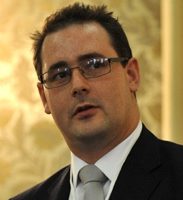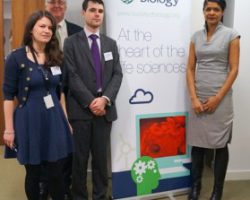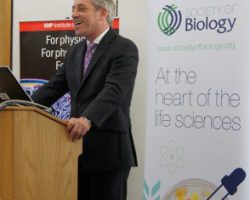Published Articles

For better or worse: the dual use of biology
Guest post by Piers D Millett, Deputy Head of the Implementation Support Unit for the Biological Weapons Convention (BWC) Unfortunately, biology has huge potential to be used as a weapon, most likely by deliberately instigating disease. As yet we have no sure fire way to maximise the benefits of biology whilst minimising any risks. I believe you are going to hear a great deal more about ‘dual use research of concern’ (DURC) over the next few years. In January this year, members of the international influenza research community ended a year-long self-imposed ban on research designed to make a bird flu virus spread from mammal to mammal. It is the most high profile recent example of DURC. The moratorium had been put in place “to explain the public health benefits of this work, to describe the measures in place to minimise possible risks, and to enable organizations…
Opening up policy
James Lush, Policy Manager at the Biochemical Society, discusses whether policy making is becoming more open The question “do we know what is desirable in open policy making?” was one of the opening gambits at the Experts, publics and open policy event held at the House of Lords on 15 January. Sir Roland Jackson, Chief Executive of the British Science Association (until April), said that broad participation is vital for openness in policy-making. But how can this be incorporated into the current processes without relying on anecdotes? And how do we know that the views of the people who are asked (or, more problematically, put themselves forward) are representative? There is, of course, more than one public. There are signs that government is becoming more open. For example, the House of Commons Science and Technology Select Committee is to start live tweeting some of its evidence sessions. Stephen McGinness, the Committee Clerk, has…

Podcast: views after the #policylates debate
At the first #policylates debate, held on the 29th November at Charles Darwin House, the panel discussed whether or not the UK Parliament could do with more scientists. With the online poll initially showing 96% ‘yes’ votes, this was reduced to about 60% ‘yes’ amongst audience members by the end of the debate. The debate became rather heated at times, perhaps unsurprisingly between the Liberal Democrat Dr Evan Harris and the Conservative Dr Phillip Lee. Labour’s Chi Onwurah remained a professional chair throughout, only revealing her own views after the debate had closed. Haralambos Dayantis has produced a brief podcast from interviews with panellists and selected audience members, which will give you a flavour of the evening’s proceedings. Podcast credits: Haralambos Dayantis is the man behind the curtain, responsible for producing the podcast and helping co-ordinate the first #policylates event with the Society of Biology. Kaz Janowski…
bTB or not bTB? How to control it is still the question
Guest post by Catherine O’Connor, Epidemiologist for the Health Protection Services, discussing the badger cull As an epidemiologist, my job is to understand the how, what, when, where and whys of disease transmission. Though we now possess much fancier tools than those used by the father of epidemiology, John Snow (he of the Broad Street pump and cholera fame), it is by tackling these age-old questions that we attempt to understand and ultimately eradicate disease. But sometimes it’s not as easy as just removing a pump-handle. For humans we have two main methods of controlling infectious diseases, either we protect the susceptible individuals or we quarantine infected individuals. Often methods are used in combination for maximum effect. For animals, we have one additional control measure in our repertoire: culling. Culling animals is used not just to control disease (enzootic and zoonotic) but also to reduce human-animal conflicts…
The many nests of the hairy wood ant
Guest blog from Samuel Ellis, a PhD student at the University of York Centre for Complex Systems Analysis There are an estimated 22,000 species of ants, and it is likely that the weight of ants on the planet is greater than the weight of humans. They are very important to ecosystems all over the world including in this country. I am currently conducting a study on the hairy wood ant (Formica lugubris) at the Longshaw Estate in the Peak district. This species is part of a closely related group of six species called the red wood ants which dominate woodland environments across Europe. These ants build distinctive dome shaped nests of pine needles (with underground chambers) which can be up to 1m high (but are more usually around 30cm). They are apex invertebrate predators outcompeting other ant species and hunting for invertebrate prey on the forest floor…

Have your say on Open Education Resources
Eva Sharpe, Higher Education Policy Officer, Society of Biology calls for people to fill in a HE teaching survey There are many excellent teaching resources publicly available for lecturers to use and re-use in the biosciences across various websites, publications and discussion forums. Although some of these resources are featured in specific online repositories such as Jorum, many are hosted directly on institutions’ own websites and require a bit of searching to find them. Preliminary results of a survey we’re currently carrying out suggest that the main barriers to the use of Open Education Resources (OER) are that people don’t always know where resources are located or can’t find what they are looking for. The Society of Biology recently received funding from the Higher Education Academy and JISC through their OER Programme to work with the Heads of University Biosciences (HUBS) to address this by promoting the use of OER by the bioscience community. As part of…

Science, sport, and politics combine for Parliamentary Links Day
Around 250 MPs and distinguished scientists gathered at the House of Commons to discuss Science and Sport, as the Society of Biology hosted the biggest ever Parliamentary Links Day. House of Commons speaker Rt Hon Jon Bercow MP opened the event, telling delegates that although there was a ‘great distance to travel’ in terms of promoting scientific understanding among MPs, there had been a great deal of progress in recent years. Science and Universities Minister Rt Hon David Willetts MP said Parliamentary Links Day had become “the biggest gathering of scientists coming to parliament”. “Often the sporting environment is one of the first places where technical innovations are seen and can be tested. Sport drives innovation,” he said before taking questions on scientific understanding in politics. In the first of two panel discussions Andy Parkinson, chief executive of UK Anti-Doping, explained how new scientific techniques meant…
